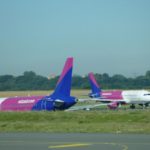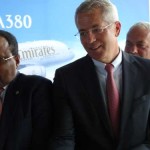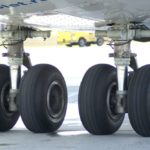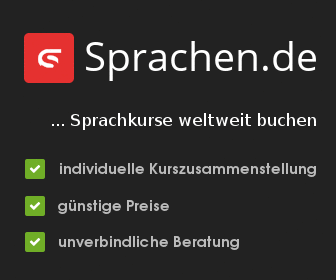Iberia today posted its results for the second quarter, showing total income from operations of 1,447 million euros, a 19.2% increase from the second quarter of last year.
- Passenger revenues grew by 16.7% in the quarter, thanks to sharp increases in unit income and load factor on international routes.
- Aircraft occupancy -the load factor– increased by 4.5 points to 79.8%. Business Class put in an excellent performance on both European and overseas routes.
- The EBITDAR climbed by 12% from the level marked in same-2005, despite rising fuel costs which pushed expenses 116 million euros higher.
- The operating result amounted to 49.2 million euros, down 17.3% from same-2005, which was due chiefly to the application of the international accounting rules (NIC 39). Measured by the former accounting standards the result would have shown a 40% improvement on performance in the same quarter of 2005.
- Unit operating costs (excluding fuel) rose by 1.4% in the second quarter, but under the old accounting standards they would have shown a decline of 1%, with significant reductions in staff and sales costs.
- Productivity (total ASKs -available seat-kilometres– per employee) rose by 7.5% from year-ago levels. Operating income per employee increased by 16.3% in the second quarter and by 12.9% in the first two quarters.
Operating revenues, which do not include non-recurrent income items, climbed by 14.8% from same-2005. All business units posted gains –with a particularly outstanding performance in aircraft maintenance for external clients– and all showed improvements from the first quarter, together reaching a total of 1,392.9 million euros. Of this total, 85% represents passenger and freight income (1,
183.2 million), which rose by 14.4% from the level marked in the second quarter of 2005. All other operating revenues totalled 209.7 million euros, up 16.7% from the 179.6 million posted a year ago.
Passenger revenues alone came to 1,104 million euros, a gain of 143 million (14.9%) from same-2005.
Ordinary operating costs were up by 16.4% from year-ago levels (189.7 million euros), which was due mainly to higher fuel costs and increased production in the airline and maintenance divisions. Thus unit operating expenses (by ASK) showed a 9.7% hike, or 1.4% when fuel is excluded. If we also adjust the figures for the impact of the application of the NIC 39 accounting standards on the appraisal of financial instruments; unit operating costs (without fuel) shows a 1% decline.
Total spending on fuel amounted to more than 116 million euros in the second quarter, a 62.2% increase over same-2005. The price of Brent remained higher than $60/bbl. for most of the quarter, and peaked at nearly $75 in early May. On average, the price was some 35% higher than in the same period of 2005.
Hedging contracts enabled Iberia to hold spending on aviation fuel within the $50-$60/bbl. range for about 90% of the fuel consumed, and this signified a savings of nearly 10 million euros. Currency hedging operations contributed additional savings of some 1.6 million euros.
The EBITDAR amounted to 218.2 million euros in the quarter, a 12.1% gain over the year-ago level, despite the additional spending on fuel which amounted to some 116 million euros). Operating results of
49.26 million euros in the quarter were 17.3% below those of same-2005, but this was due to the application of the new NIC 39 accounting rules. Measured by the old system, this result would have reached 58.47 million euros, representing a 39.7% increase from the same quarter of last year.
Traffic
Seat-kilometre supply (ASKs) in the second quarter was 6.1% larger than a year earlier, while actual demand (RPKs –revenue passenger kilometres) expanded by 12.4%.
The load factor improved by 4.5 points from the second quarter of last year, reaching 79.8% overall, which was a new second-quarter record for the company.
Iberia’s increases in both supply and demand, along with the increased aircraft occupancy rate, all outperformed the average for European scheduled airlines in the quarter. Provisional data published by the Association of European Airlines (AEA) showed that ASKs increased by 4.1% in the quarter, and RPKs grew by 7.1%, while the average load factor increased by 2.2 points.
On Iberia’s long-haul routes supply was increased by 13.2% (as compared to the increase of just 3.3% in the first quarter), while demand grew by 17.6%, which added up to a load factor of 82.5%, a 4.1-point rise. Business Plus posted even larger gains, with a 11.3-point rise in occupancy from the level marked a year earlier.
Productivity (ASKs per employee) increased by 7.5% from the second quarter of 2005, and operating income per employee grew by 16.3% in the second quarter and by 12.9% in the first two quarters.
Note: Today Iberia is not only Spain’s leading airline, but is also market leader on routes between Europe and Latin America. In 2005 it posted revenues of 5,603 million euros and net earnings of 395.8 million euros. Along with its franchise partner Iberia Regional, Iberia operates some 1,000 flights every day to some 100 destinations in Spain and around the world, and in 20005 it carried 32.4 million passengers. Iberia is a member of the oneworld airline alliance whose members together make more than 8,000 flights each day to 595 destinations in 132 countries. To learn more about the Iberia group, visit http://grupo.iberia.com





